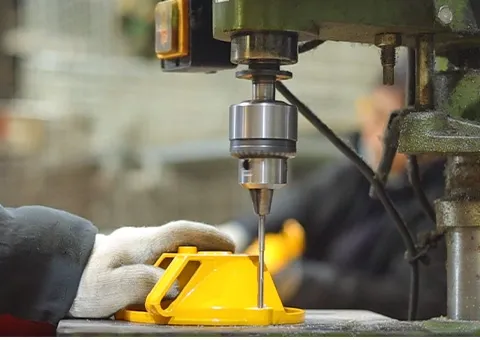machinery relocation
Machinery Relocation A Comprehensive Guide
In today's fast-paced industrial landscape, the relocation of machinery is a vital process that requires meticulous planning and execution. Whether a company is moving to a new facility, upgrading its equipment, or consolidating operations, machinery relocation plays a significant role in minimizing downtime and ensuring continuity. This article delves into the key aspects of machinery relocation, including the importance of planning, logistics, and safety considerations.
Understanding the Importance of Machinery Relocation
Machinery relocation is not just about moving equipment from one location to another; it involves a series of strategic steps designed to ensure operational efficiency. Companies may need to relocate machinery for various reasons, including expansion to larger premises, the need for upgraded technology, or the desire to optimize floor space. Each of these reasons underscores the need for effective project management and careful consideration of the logistics involved.
Planning the Relocation Process
Successful machinery relocation begins with a detailed plan. This plan should outline the scope of the project, resources required, timelines, and key stakeholders involved. An initial assessment of the machinery to be moved is crucial. This assessment should include inventorying all machinery, understanding its operational requirements, and evaluating its current condition. Identifying potential challenges and risks associated with the relocation is also essential. This involves considering the weight and size of the machinery, as well as any specialized handling or transportation needs.
Logistics and Transportation
Once the planning phase is complete, the logistical aspect comes into play. This includes determining the best method for transporting the machinery. Depending on the size and complexity of the equipment, companies may opt for in-house personnel and resources or hire specialized machinery relocation services. These services often employ experienced riggers and operators who understand the intricacies of dismantling, transporting, and reinstalling heavy machinery.
Transportation methods can vary, ranging from flatbed trucks for smaller equipment to heavy-duty transporters for larger industrial machines. Ensuring that the chosen transportation method aligns with safety regulations and industry standards is key. Proper securing of machinery during transit will prevent damage and ensure the safety of all personnel involved.
machinery relocation

Safety Considerations
Safety should be a top priority throughout the machinery relocation process. The potential risks associated with moving heavy equipment can be significant. It’s essential to conduct a risk assessment prior to relocation, identifying any hazards and implementing appropriate controls. All personnel involved in the move should be adequately trained and equipped with the necessary safety gear.
Additionally, clear communication among the team members is paramount. Designating a project manager or relocation coordinator can help streamline the process, ensuring that everyone is aware of their responsibilities and the timeline. During the move, adherence to safety protocols, including using appropriate lifting techniques and equipment, can significantly mitigate risks and prevent accidents.
Post-Relocation Installation and Testing
After successfully relocating the machinery, the next phase involves installation and testing. This is where the importance of meticulous planning and execution truly comes into play. Reassembling machinery requires precision and adherence to manufacturer specifications. Once installed, it’s critical to conduct thorough testing to ensure that the equipment operates as intended and meets quality standards.
Any issues that arise should be addressed promptly to avoid further delays in production. Engaging technical experts during this phase can provide valuable insights and support, ensuring that machinery is optimally functioning.
Conclusion
Machinery relocation is a complex process that, when managed effectively, can lead to significant operational improvements. A well-structured plan, careful consideration of logistics, adherence to safety protocols, and thorough post-relocation testing are all crucial to a successful transition. By understanding the various components involved in machinery relocation, companies can minimize downtime, reduce costs, and ultimately enhance productivity in their operations. As industries continue to evolve, mastering the art of machinery relocation will remain a cornerstone of operational success.
-
Versatile Lifting Solutions with Gantry and Overhead CranesNewsAug.29,2025
-
The Versatile Mobile Gantry Crane SolutionNewsAug.29,2025
-
Reliable Movement with Heavy Machinery Skates and RollersNewsAug.29,2025
-
Reliable Lifting Performance with 2000 lb Gantry Crane and 2 Ton Overhead SystemsNewsAug.29,2025
-
Maximize Lifting Efficiency with PML Magnetic LiftersNewsAug.29,2025
-
Efficient Relocation Starts with Reliable Machinery MoversNewsAug.29,2025
-
Efficient and Safe Lifting with Permanent Magnetic LiftersNewsAug.29,2025
